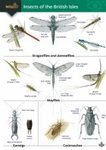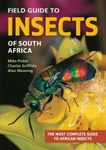By: David L Denlinger(Editor), Richard E Lee, Jr.(Editor)
390 pages, 48 illustrations, 16 tables
![Low Temperature Biology of Insects Low Temperature Biology of Insects]()
Click to have a closer look
About this book
Contents
Customer reviews
Biography
Related titles
About this book
Low temperature is a major environmental constraint impacting the geographic distribution and seasonal activity patterns of insects. Written for academic researchers in environmental physiology and entomology, Low Temperature Biology of Insects explores the physiological and molecular mechanisms that enable insects to cope with a cold environment and places these findings into an evolutionary and ecological context.
An introductory chapter provides a primer on insect cold tolerance and subsequent chapters in the first section discuss the organismal, cellular and molecular responses that allow insects to survive in the cold despite their, at best, limited ability to regulate their own body temperature. The second section, highlighting the evolutionary and macrophysiological responses to low temperature, is especially relevant for understanding the impact of global climate change on insect systems. A final section translates the knowledge gained from the rest of Low Temperature Biology of Insects into practical applications including cryopreservation and the augmentation of pest management strategies.
Contents
Preface
Part I. Physiological and Molecular Responses
1. A primer on insect cold tolerance Richard E. Lee, Jr,
2. Rapid cold-hardening: ecological significance and underpinning mechanisms Richard E. Lee, Jr and David L. Denlinger
3. Antifreeze and ice nucleator proteins John G. Duman, Kent R. Walters, Todd Sformo, Martin A. Carasco, Philip K. Nickell, Xia Lin and Brian M. Barnes
4. Genomics, proteomics and metabolomics: finding the other players in insect cold tolerance M. Robert Michaud and David L. Denlinger
5. Cell structural modifications in insects at low temperatures Vladimir Kostal
6. Oxygen: stress and adaptation in cold hardy insects Kenneth B. Storey and Janet M. Storey
7. Interactions between cold, desiccation and environmental toxins Martin Holmstrup, Mark Bayley, Sindre A. Pedersen and Karl Erik Zachariassen
Part II. Ecological and Evolutionary Responses
8. The macrophysiology of insect cold hardiness Steven L. Chown and Brent J. Sinclair
9. Evolutionary physiology of insect thermal adaptation to cold environments Raymond B. Huey
10. Insects at not so low temperature: climate change in the temperate zone and its biotic consequences William E. Bradshaw and Christina M. Holzapfel
11. Genetic variability and evolution of cold tolerance Johannes Overgaard, Jesper G. Sorensen and Volker Loeschcke
12. Life history adaptations to polar and alpine environments Peter Convey
Part III. Practical Applications
13. A template for insect cryopreservation Roger A. Leopold and Joseph P. Rinehart
14. Implications of cold tolerance for pest management J..S. Bale
Index
Customer Reviews
Biography
David L. Denlinger is Distinguished University Professor at the Ohio State University. He is a recipient of the Recognition Award in Insect Physiology, Biochemistry and Toxicology from the Entomological Society of America and a member of the National Academy of Sciences. He is a Fellow of AAAS, the Entomological Society of America and the Royal Entomological Society.
Richard E. Lee, Jr is Distinguished Professor of Zoology at Miami University, Oxford, Ohio. His honors include several teaching awards, the Benjamin Harrison Medallion from Miami University and election as a Fellow in AAAS, the Entomological Society of America and the Royal Entomological Society.
By: David L Denlinger(Editor), Richard E Lee, Jr.(Editor)
390 pages, 48 illustrations, 16 tables



































